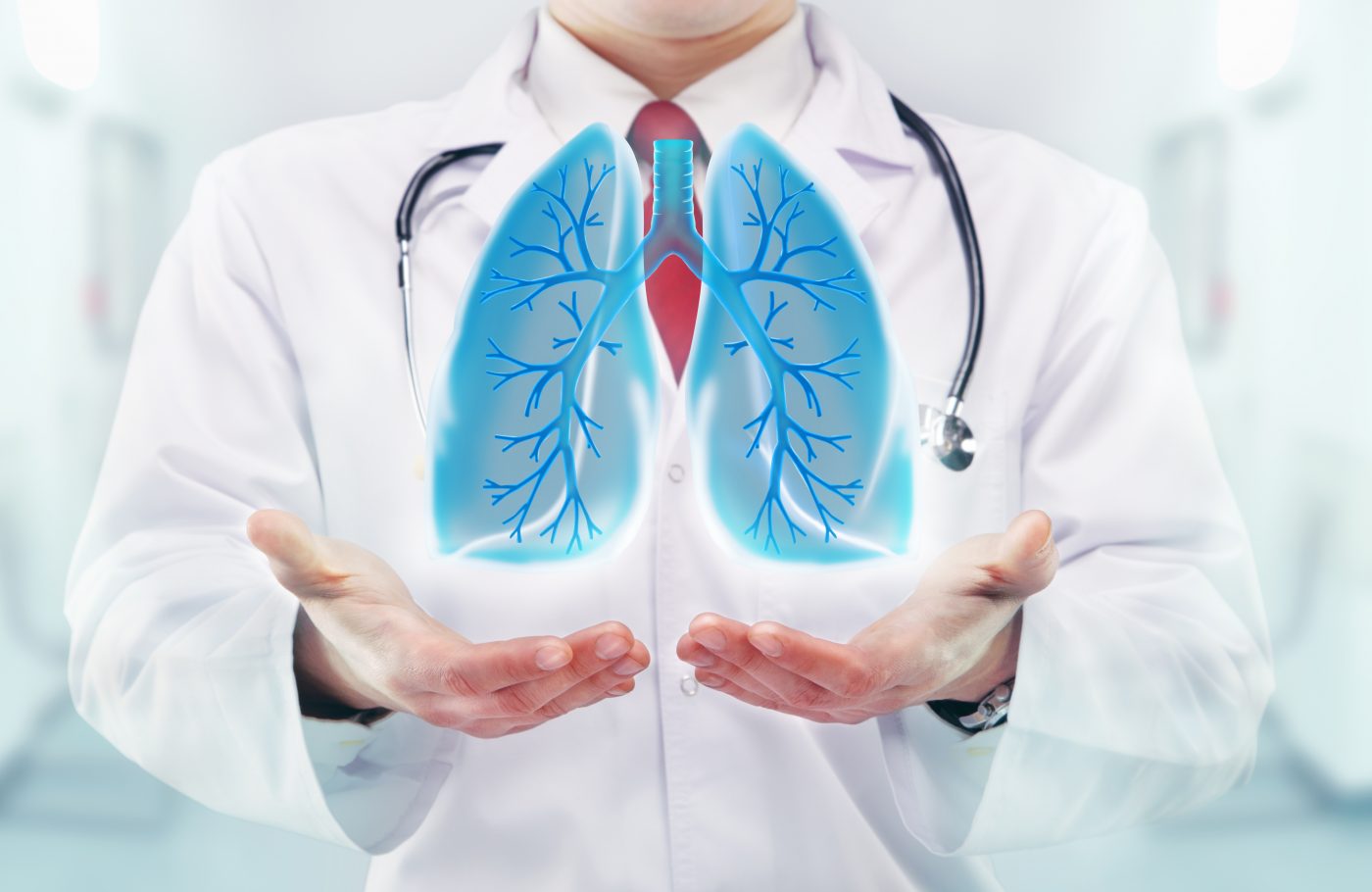Lung Function Decline After Antifibrotic Therapy Predicts Survival in IPF, Study Shows
Written by |

Idiopathic pulmonary fibrosis (IPF) patients showing a lesser decline in lung function after antifibrotic treatment, especially with Ofev (nintedanib), live significantly longer, according to a study in Japan.
Such decline prior to antifibrotic therapy and changes in its rate with treatment did not predict survival outcomes, the researchers noted, suggesting that monitoring lung function post-treatment may be the best predictor of survival for people with IPF.
As such, patients may benefit from early monitoring of lung function decline, supporting decisions as to whether to continue with or switch therapies.
The study, “Prognostic significance of forced vital capacity decline prior to and following antifibrotic therapy in idiopathic pulmonary fibrosis,” was published in the journal Therapeutic Advances in Respiratory Disease.
Esbriet (pirfenidone; marketed by Genentech) and Ofev (by Boehringer Ingelheim) are two oral antifibrotic therapies approved for IPF. Both are known to slow the rate of lung function decline — as measured by forced vital capacity, or FVC — in people with the disease, and each associate with better survival.
Of note, FVC represents the volume of air in the lungs that can be exhaled after a deeply inhaled breath; it is presented as a percentage of a reference value, normally above 80%.
Still, “many pulmonologists wait before initiating treatment, especially when IPF patients have stable disease,” the researchers wrote.
A previous study showed that an early FVC decline of more than 5% following treatment with Esbriet was significantly associated with a poor prognosis in IPF patients.
However, whether a decline in FVC prior to antifibrotic treatment and whether changes in the rate of FVC decline after treatment may also be predictive of survival in this patient population remains unknown.
A team led by researchers at Hamamatsu University School of Medicine set out to assess the impact on survival of lung function decline (as measured through FVC) prior to and following antifibrotic treatment.
The researchers retrospectively analyzed the demographic and clinical data of 105 people with IPF followed at their hospital and associated ones. Patients underwent lung function tests six months before and after starting treatment with Esbriet (59 patients) or Ofev (46 patients).
Participants’ median age was 70 in both groups, and a significantly higher proportion of those on Ofev reported adverse events (56.9%) than did those receiving Esbriet (33.9%). Three patients in each group discontinued treatment due to side effects.
The team classified patients’ lung function decline, prior to and after antifibrotic therapy, based on an FVC decline either smaller or greater than 5%. Those with drops in FVC of 5% or greater were included in the worsened group (either prior to or after therapy), while those showing a FVC decline of less than 5% made up the stable group (prior to therapy) or the stable/improved group (after therapy).
Patients were also classified as non-responders if the rate of FVC decline seemed to increase after six months of treatment, and as responders if this rate appeared to have slowed down.
Results showed that lung function decline before initiating antifibrotic therapy, along with response to treatment (slower or faster rate of FVC decline), were not significant predictors of survival.
In turn, patients with stable or improved lung function after antifibrotic treatment lived significantly longer than those showing worsened lung function.
Further analyses highlighted that this significant association between post-therapy lung function decline and survival was present only among Ofev-treated patients, with those on Esbriet showing a similar but not statistically significant trend.
FVC decline of less than 5% after treatment was associated with a significantly reduced risk of death by 64% in all patients, and by 86% in those using Ofev.
These findings suggest that Ofev “may have more impact on survival compared with [Esbriet] if the disease has stabilized/improved following treatment,” the researchers wrote, adding that this may be associated with a reduced risk of acute exacerbations, the leading cause of death in IPF patients.
Among Ofev-treated patients, those showing worsened lung function after therapy were more likely to have acute exacerbations than those in the stable/improved group. No similar associations were found among Esbriet-treated patients or in the entire patient population.
Of note, patients with a lower post-therapy decrease in lung function had a higher body-mass index (BMI) than those with worsened function, suggesting that weight may also be a predictor of survival outcomes.
“These data suggest that an early [lung function] evaluation following antifibrotic therapy is important to predict outcomes in patients with IPF,” the researchers wrote.
“Collectively, there may be no need to watch and wait until the disease progresses,” the team added, noting that “physicians should look at their patients’ early response to [antifibrotic] treatment, then switch to other [therapies], take part in clinical trials, or proceed with lung transplantation without delay if needed.”





